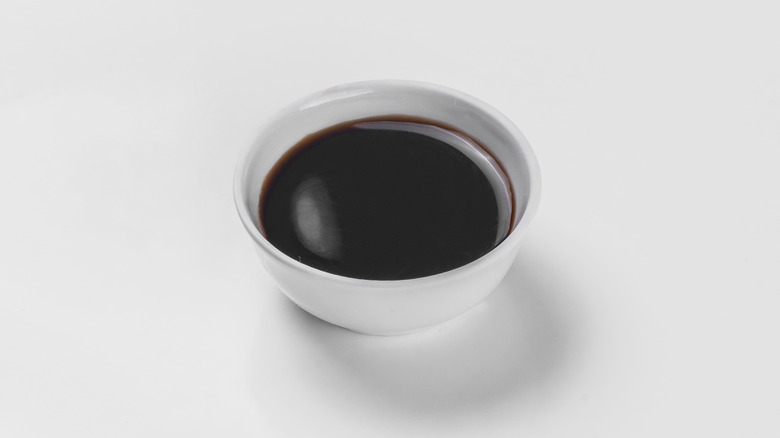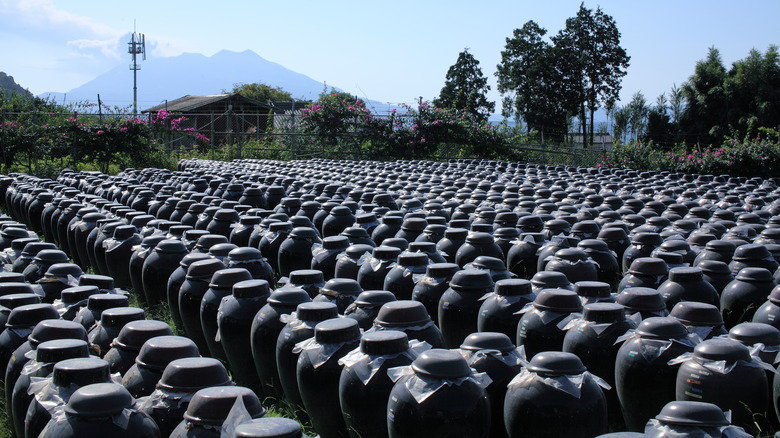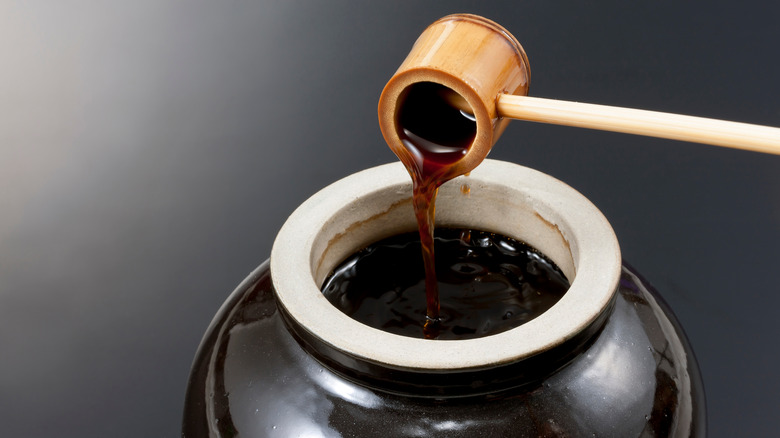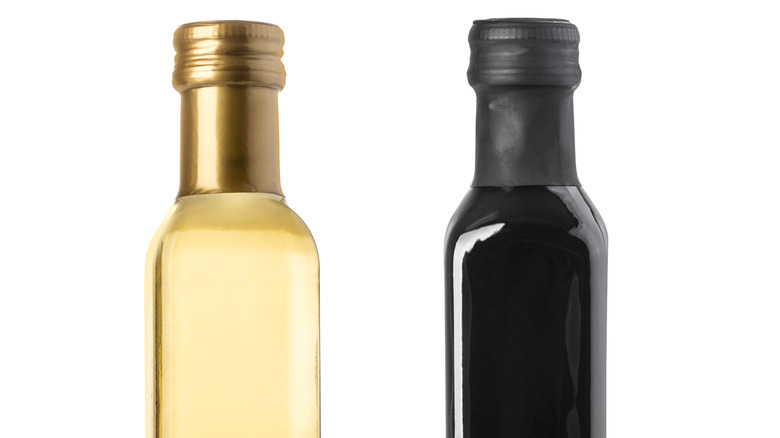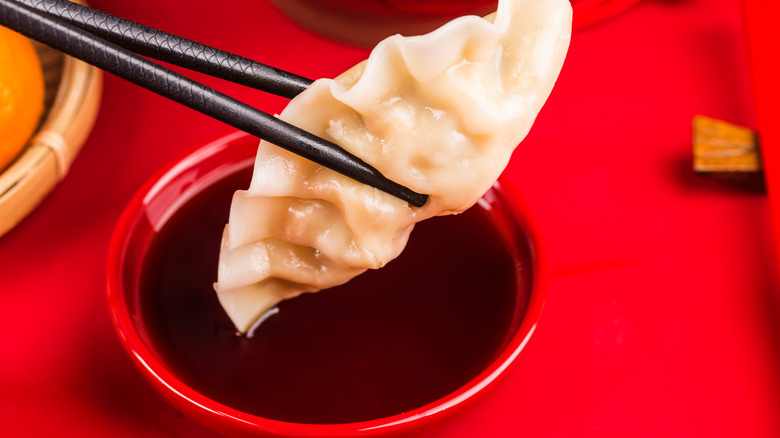What Makes Black Vinegar Unique?
Vinegar is the multihyphenate of the kitchen, adept at a wide array of tasks. It is, first and foremost, an agent of acidic flavor, but that's just the tip of the iceberg. The Harvard School of Public Health notes that vinegar can also be used to tenderize meat, preserve food via pickling, and is strong enough to clean mineral buildup or greasy kitchen messes. It's almost unfair that one ingredient could have so many talents, but that's vinegar's magic. And to think — it was probably invented by accident. Legend has it that vinegar was discovered in Babylonia around 5,000 B.C. when wine was left unattended for so long that it fermented (via the National Library of Medicine).
This story may sound like a tall tale, but it makes sense because, even today, most types of vinegar are made by taking wine or another form of alcohol and fermenting it with a bacterial culture until the alcohol converts into tangy acetic acid (via Bon Appétit). There are only a couple of types of vinegar that are made differently. The best known is balsamic vinegar, which is made directly from grape must rather than from wine. There is also black vinegar, an east Asian variety that may not be as well-known in America but deserves a place in our pantries.
How black vinegar is made
Whereas most other kinds of vinegar involve making alcohol and fermenting it, black vinegar is different. According to Bon Appétit, black vinegar is made by fermenting whole steamed grains in clay pots. The aging process takes at least six months, and many kinds of black vinegar undergo years of fermentation. During the lengthy process, the vinegar undergoes the Maillard reaction, an interaction between carbohydrates and amino acids, which is the same phenomenon that darkens bread in the toaster. This is why black vinegar is black.
According to Greatist, black vinegar can be made from many different types of grain, making it more of an umbrella term than a specific descriptor. But typically, glutinous rice is the grain of choice, though you can make black vinegar from wheat, millet, or sorghum. Bon Appétit notes that the grain base puts a hint of malt into its flavor profile, and the Maillard reaction doesn't just lend color but helps it develop its distinct umami taste.
Types of black vinegar
Different geographical regions each have their type of black vinegar, according to Bon Appétit. In China, the birthplace of black vinegar, there are four regional varieties. In the northern province of Shanxi, they make vinegar from sorghum, wheat, or barley. In the southern Chinese city of Zhenjiang, their regional version (known as Chinkiang vinegar) is made from sticky rice. The Sichuan province, known for its spicy peppercorns, makes a heavily seasoned wheat-based black vinegar, and the eastern province of Fujian infuses its rice-based vinegar with a fungus that gives it a reddish tint.
Black vinegar is also used in other East Asian cuisines. In Japan and Korea, they make it from brown rice. Meanwhile, Taiwan has a unique take on black vinegar that adds even more nuance to the flavor profile. Taiwanese black vinegar is combined with a medley of vegetables, such as carrots, onions, and mushrooms, and steeped for a minimum of one year to infuse the brew with various flavors.
Black vinegar vs. white vinegar
The apparent difference between black and white vinegar is the color, and in this regard, the product's name says everything you need to know. Still, the shade is not nearly as significant as the differences in flavor and the production processes. According to Healthline, white vinegar is made by introducing bacteria to grain alcohol, a very different process than the one we described for making black vinegar. The white vinegar you buy in grocery stores is officially known as distilled white vinegar, whereas standard white vinegar is so acidic that it's only used for cleaning purposes.
The flavors of black and white vinegar are very different as well. Speaking to Bon Appétit, Teresa Lin, a chef and food stylist best known for her work on Ang Lee's "Eat Drink Man Woman," criticizes white vinegar as being "just sour," whereas, "black vinegar is more aromatic." Black vinegar is often described as having notes of licorice and malt and an earthy umami undertone. Food Republic adds that black vinegar is not as harshly acidic as other kinds of vinegar and even has a touch of sweetness to it, a bit like balsamic.
Cooking with black vinegar
Black vinegar has different uses in different regions, and Bon Appétit recommends learning exactly where your black vinegar comes from so you know how best to cook with it. For example, Taiwanese black vinegar is meant to be used sparingly, with just a drop or two added as a condiment, whereas the Chinese often mix black vinegar with soy sauce. If you wish to turn it into a dressing, Bon Appétit recommends using equal parts black vinegar, soy sauce, and oil.
Black vinegar also appears in numerous Chinese recipes, like this classic kung pao chicken, and it's a great companion for dim sum. Greatist mentions that black vinegar is ideal when combined with soy to make a dipping sauce for xiao long bao and other dumplings. You can also add it to marinades or use it in place of other acidic ingredients when you want to add a kick of umami flavor.
